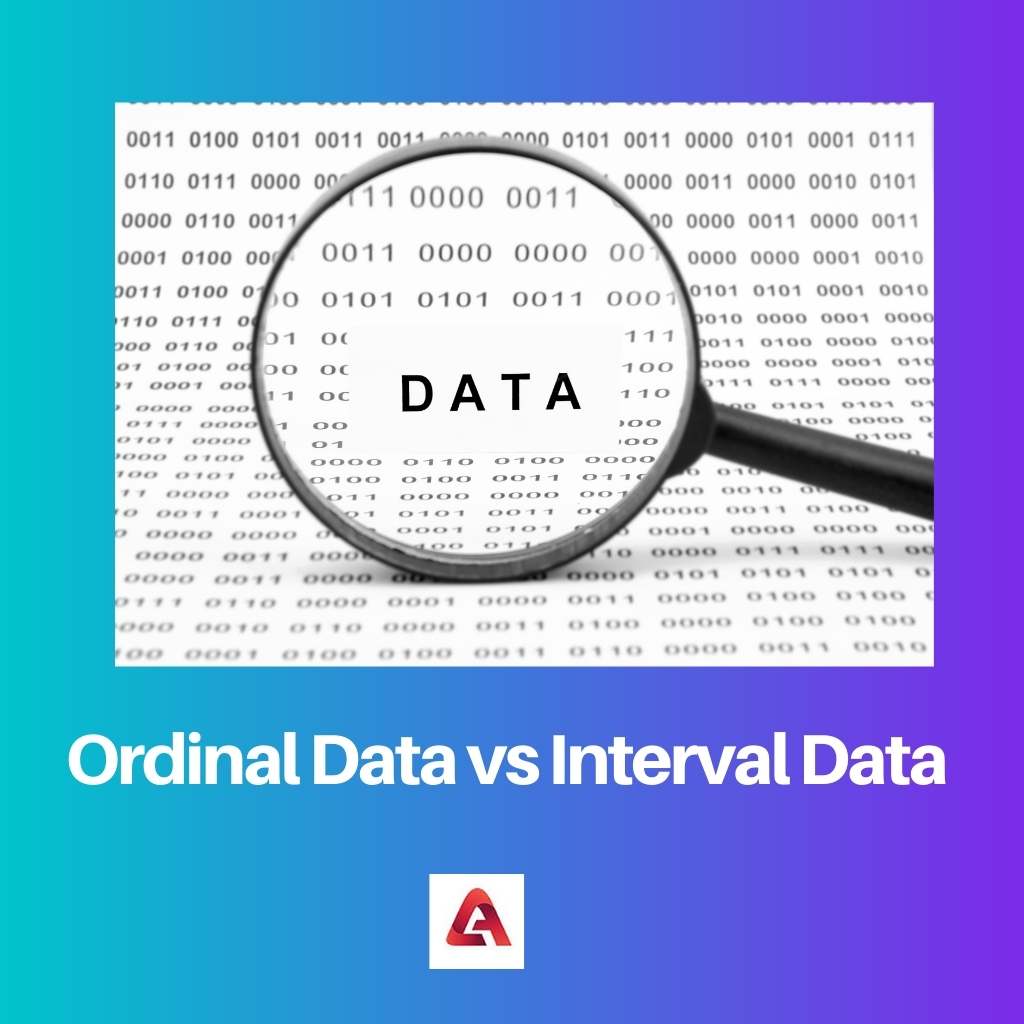Ordinal and interval data are two of the four main types of data or classifications used in statistics and related fields. Both data formats satisfy the need to categorize and express information.
Both types of data are important because they provide users with information that can be utilized to calculate statistics on various aspects.
Key Takeaways
- Ordinal data is categorical data that has a natural order or ranking.
- Interval data is numerical data with a consistent scale with equal intervals between values.
- Ordinal data can be sorted but not subjected to mathematical operations, while interval data can be added, subtracted, multiplied, and divided.
Ordinal Data vs Interval Data
Ordinal data is a type of categorical data where the categories have a natural ordering or ranking. For example, a survey question asks people to rate their level of satisfaction with a product or service. Interval data is a type of numerical data where the intervals between values are equal.

Ordinal data is identified by a distinct and natural ordering, ranking, or succession on a scale. Furthermore, ordinal data do not care about the certainty or equality of two values.
The value’s position is emphasized. It is a non-parametric data type.
It also tends to offer less information than interval data.
In contrast to ordinal data, interval data offers a more meaningful and continuous scale of measurement. They also give more quantitative information than ordinal data.
It is numerical data which means that it represents the quantifiable quantities of something. It provides a certain amount of variation between any two values.
We can add or subtract the values of interval data in a meaningful way.
Comparison Table
| Parameters of Comparison | Ordinal Data | Interval Data |
|---|---|---|
| Concern | More concerned about order and ranking. | More concerned about the difference between two values. |
| Equality | No certainty of equal intervals. | There are equal intervals. |
| Types of Data | Non-parametric data | Parametric data |
| Uniformity | The sequence and scale are not uniform. | The scale is uniform. |
| Information | Reveals less information | Reveals more information |
What is Ordinal Data?
Ordinal data is a scale-based organization of data. For example, variable X may be the number of days participants were given a specific diet, and variable Y could be the ranking of these people in a race.
It is feasible to correlate the influence of variable X on variable Y in such data.
Ordinal data is based on a rating system. For example, in a 100-meter race, the winner may take 11 seconds, the second-place holder 11.5 seconds, and the third-place holder 12.5 seconds.
Because the time gap between rankings is not defined, all you know are the ranks of various persons.
Ordinal data is categorical, meaning it defines various different characteristics of things. It has a natural rank order, meaning we can sort the data naturally.
Ordinal data have a specific category and a non-consistent scale. Their major role is to characterize or rate data according to a certain scale of attributes.
It is made up of non-parametric data that does not follow any certain distribution or prediction trend.
Some examples of ordinal data can be the different Olympic medals, I.e., bronze, silver, and gold, and the letter grading system for test results.
What is Interval Data?
Interval data, known as an integer, is a data type that is measured along a scale, with each point being put at an equal distance from the others.
Interval data is always represented by numbers or numerical values in which the distance between two places is standardized and equal. This sort of data has a uniform scale.
As the name indicates, interval data is based on a continuous scale. There are values such as 50 and 51 degrees on a temperature scale.
You are aware that the difference is one degree.
Interval data is concerned with the differences between two consecutive values on a certain scale. The in-between number on a scale has an equal split or even difference.
The difference between the two values is obvious and may be represented as regular and consistent intervals within each interval.
It is commonly used in psychological research and cannot be subjected to mathematical operations such as multiplication or division.
Interval data, like ratio data, contains parametric data. The distribution of this type of data within the scale is predictable and recognized as a type of parametric data.
It has an arbitrary zero point on its scale. This means that there is no way to multiply or divide two values or get a ratio meaningfully.
Main Differences Between Ordinal Data and Interval Data
- Ordinal data is more concerned about the order and ranking of the given data, whereas interval data is more concerned about the difference between two different values.
- In ordinal data, there is no certainty of equal intervals. In interval data, there are equal intervals between all the values.
- Ordinal data consists of non-parametric data, and interval data consists of parametric data.
- In ordinal data, the sequence and scale of the values are not uniform. In interval data, the scale and sequence of values are very uniform, I.e., the difference between two values remains the same.
- Ordinal data reveals less information and interval data tends to reveal more information.
- https://journals.sagepub.com/doi/abs/10.3102/00346543071001105
- https://www.archives-pmr.org/article/0003-9993(89)90151-2/abstract

The explanation about interval data was particularly clear and helpful.
I believe it would have benefited from a more in depth example.
It’s interesting to find out more about the differences between ordinal and interval data.
If I could make one suggestion, it would be to incorporate a real world example to help readers understand the concepts better.
It’s quite informative, but I do think the part about interval data repeats some information already given.
This article has been very interesting to read, there is a lot of good information.